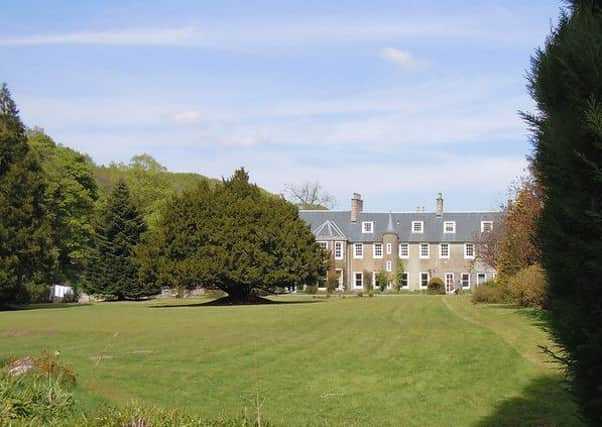David Johnstone: '˜Big house' part of wider community


Ask the general public about their perception of Scottish estates and it is likely that the Monarch of the Glen image will feature prominently.
The image of the big country house may be the stereotype picture for some but it doesn’t accurately reflect the diverse face of modern landownership in Scotland.
Advertisement
Hide AdAdvertisement
Hide AdIn the last month I have been fortunate enough to visit Craigengillan Estate in Ayrshire. A well-maintained house does lie on the estate – but it is the people and community who cherish Craigengillan that are its heart.
The estate was purchased by Mark Gibson in 1999 and over that period, he has transformed the local perception of Craigengillan.
Lying close to Dalmellington and the nearby village of Bellsbank, Craigengillan is in an area whose economy has been hard-hit over recent decades.
When Mark took over the running of the estate, it was very much separate from the people of the local area. Fences and wiring ensured that private areas were kept private.
However, removing this unwelcome and unnecessary security was the first change – and a thriving stable yard, a healthy farming enterprise and work on forestry and conservation are just some of the areas where Craigengillan has partnered with local people to not only create employment but also chances and opportunities.
Yet it is not just about business. The estate encourages people to walk, learn and care for the land, whilst a stream of local schoolchildren from the nearby primary school recognise Craigengillan as their outdoor classroom, with the estate owner and staff always on hand to help teachers ensure their pupils have opportunities that many other schools would envy.
One of Mark’s major achievement in this regard was the opening of the Scottish Dark Sky Observatory in 2012. With the area recognised for its low levels of light pollution, the observatory not only provides a learning resource for children but brings tourists from both home and abroad.
Why is this important? What Mark has created at Craigengillan may not be exactly replicated on every estate across Scotland – but what is achievable is a recognition that landowners should be as inclusive and as engaging as they can be. At our recent spring conference, addressed by the new cabinet secretary for environment, climate change and land reform, Roseanna Cunningham, there was a clear acknowledgment by us that we are in a new era of landownership.
Advertisement
Hide AdAdvertisement
Hide AdWhat landowners do and the wide range of businesses they operate are shaped by the political landscape – and how eventful has that landscape proved to be in recent years. After an intensive two-year land reform debate we now have a Community Empowerment Act and a Land Reform Act that have very significant implications for rural Scotland as a whole and the land business sector in particular.
The question now is how land-based businesses choose to respond.
There are those who characterise landowners and estates as arrogant dinosaurs implacably opposed to change and hopelessly out of touch. It is a very easy if not accurate caricature but we do need to ask ourselves how much do we occasionally contribute to that stereotyped image.
However, we also need recognition for when we do get things right.
Now the dust is settling on the recent Land Reform Act, there is a very compelling case to be made for a rural concord – a fresh start in which government, community bodies and landowners work together in a spirit of renewed co-operation.
A better climate of co-operation could bring about a host of benefits for communities across Scotland.
If we are able to achieve this then I hope land businesses will be in a better position to have their contribution recognised in future years. We know that land reform is likely to be an ongoing conversation – the challenge for landowners is to ensure that the work of people like Mark Gibson is just as synonymous with landownership as tweed and country houses.
• David Johnstone, chairman of Scottish Land & Estates